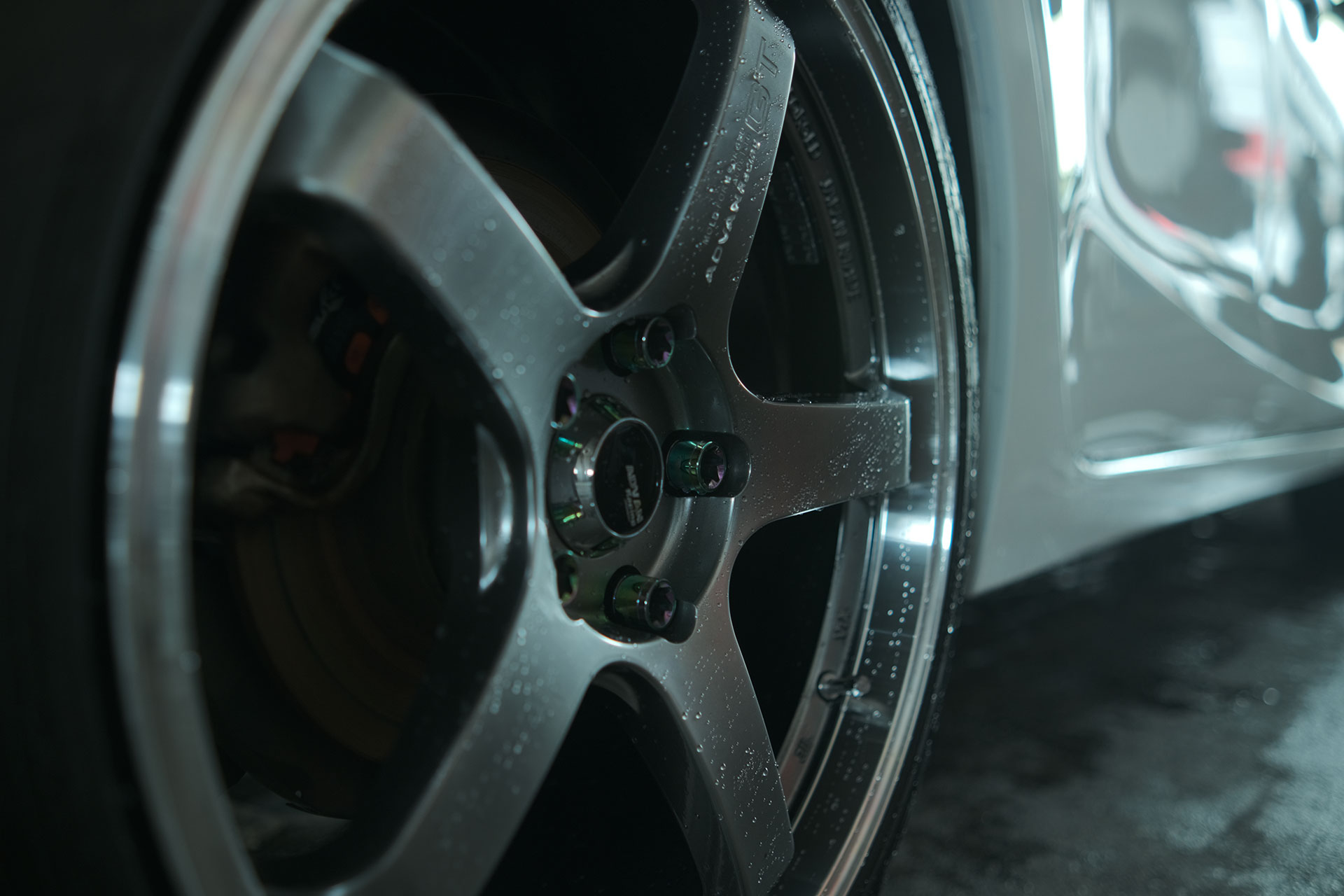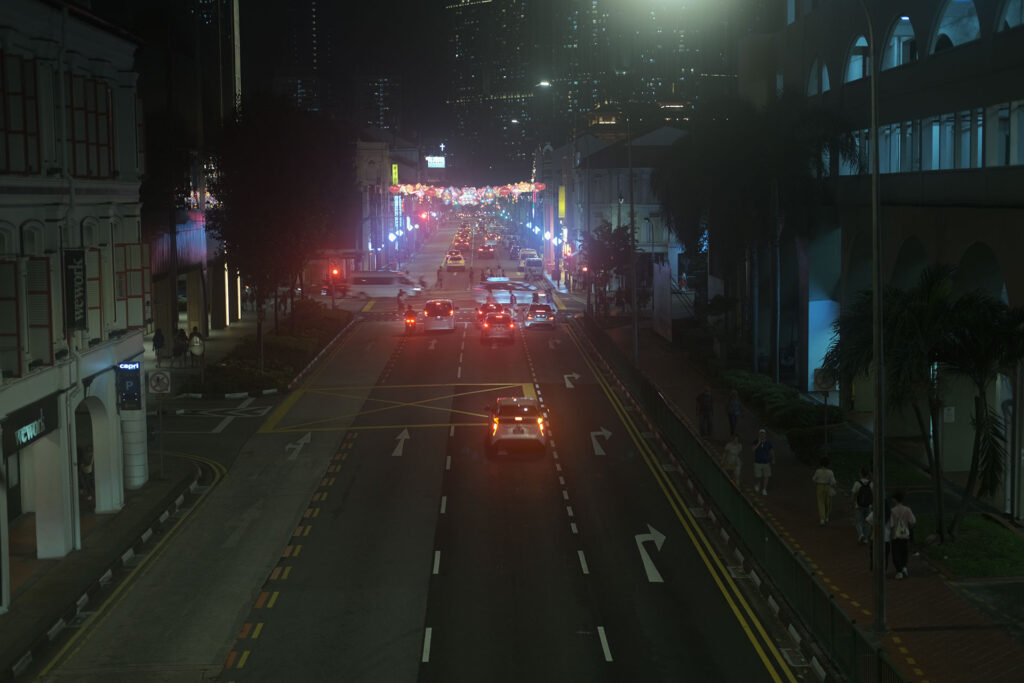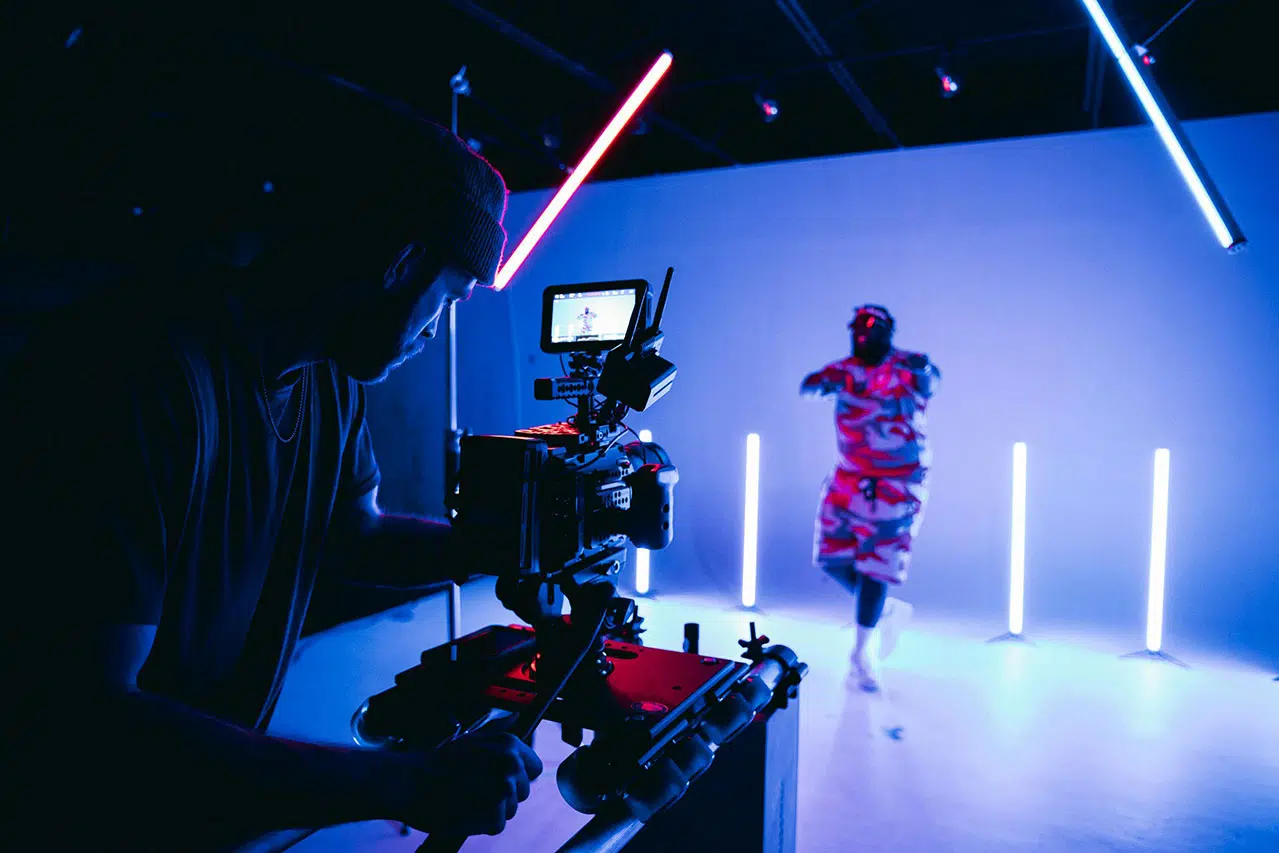If you love wandering through neon-lit streets and catching moody scenes after dark, Fujifilm film simulation recipes can really level up your photos. These custom looks give your night shots a cinematic punch straight out of camera—no editing needed.
Whether you’re into soft glows, deep shadows, or cool blue tones, there’s a Fujifilm recipe that captures the vibe. One that truly stands out for city lights and late-night walks is the Ginza Midnight recipe. Let’s dive into why it’s one of the best recipes for night photography.
Ginza Midnight is made for low-light scenes. It’s a cinematic recipe for Fujifilm cameras that leans into the moody, stylish tones of neon signs, city glow, and nighttime quiet. You’ll notice a subtle tungsten blue tint that gives your images a cool, unique vibe.
Inspired by the high-speed Tokyo expressway manga Wangan Midnight, this recipe channels that same feeling of cruising through city streets under dim street lamps and buzzing signs.
Get the exclusive Ginza Midnight Fujifilm recipe and start capturing low-light scenes with that cool tungsten blue glow and Japanese city vibes. Whether you’re in Tokyo or just chasing the night lights in your neighborhood, this recipe brings the mood straight out of camera.
This recipe works best on Fujifilm X-Trans IV cameras like the X-T4, X-E4, X-S10, or X100V. It also works on X-Trans V (like the X-T5 or X100VI) with similar results. For older cameras, just skip the Clarity setting.
Shoot wide open with fast lenses—f/1.2 to f/2 is perfect. Low ISO (around 640 or less) and slight underexposure (-1/3 to -2 EV) give you the best results.
Best shoot during the blue hours. Light contrast—street lamps, fluorescent signs, building reflections, or cars with their rear lights on.


The strength of Ginza Midnight lies in how it handles light—or the lack of it. This is a Fujifilm night recipe that works best with underexposed scenes. It’s fine-tuned for the dark, not daylight. Think of alleyways lit by one flickering light, crosswalks under glowing signage, and windows pouring out cold fluorescent hues. You’ll want to shoot wide open with fast lenses—f/1.2 to f/2 is perfect. Low ISO (around 640 or less) and slight underexposure (-1/3 to -2 EV) give you the best results.
This low-light Fuji recipe really shows off when you’re walking through areas packed with ambient lights. Places like Shinjuku, New York’s Chinatown, or even quiet street corners lit by vending machines—it all comes to life with this look.
For a daylight shoot, I recommend the warm Japanese 80s film-look Ginza 1980 recipe.
Ginza Midnight is the first Japanese-inspired low-light Fujifilm recipe. It’s all about Tokyo at midnight—those calm, cinematic moments when everything feels slightly unreal. It works beautifully in cities outside Japan, too. Kuala Lumpur’s backstreets, Berlin’s U-Bahn stations, or Melbourne’s laneways—wherever you’ve got artificial light and night shadows, Ginza Midnight fits right in.
Ginza Midnight stands out as one of the best Fujifilm recipes for night photography. With its cool tungsten blue tones, cinematic feel, and excellent handling of low-light, it’s perfect for urban scenes after dark.
Pair it with a fast lens, shoot underexposed, and let the city lights paint your frame. Whether you’re walking the streets of Tokyo or exploring your own hometown at night, this Fujifilm night recipe delivers photos that feel straight out of a movie.

To really nail this cinematic Fujifilm recipe, pick scenes filled with light contrast, recommended during blue hours, and aim for street lamps, fluorescent signs, building reflections, or cars with their headlights on. This isn’t a recipe for daytime use or evenly lit scenes. It thrives when you push the shadows and pull those glowing blues from the dark.
Ginza Midnight pairs well with slow-paced, solo street sessions where you can take your time hunting for light. If you’re shooting JPEG only, this one’s a dream—what you see is basically what you get. And if you shoot RAW + JPEG, you’ll still love what the JPEG offers.
Note: The Fujifilm film simulation recipes shared on this website are based on personal experience and experimentation. These settings are designed to mimic the look of various film stocks but are not exact replications. Film characteristics vary based on factors such as lighting, lens choice, and camera model. Results may differ depending on individual shooting conditions and preferences. Use these recipes as a creative starting point and adjust them to suit your style. This content is not affiliated with or endorsed by Fujifilm or Kodak. Some links on this page may be affiliate links, which help support the site at no extra cost to you.
I like cinematic movie colour tone, so here I’ve created a custom film recipe named Cine Matte for my Fujifilm X-T4. After shooting urban night photography with my new Fujifilm X-T4, I’ve taken a step forward...

Curated Camera Gear & Vinyl Records